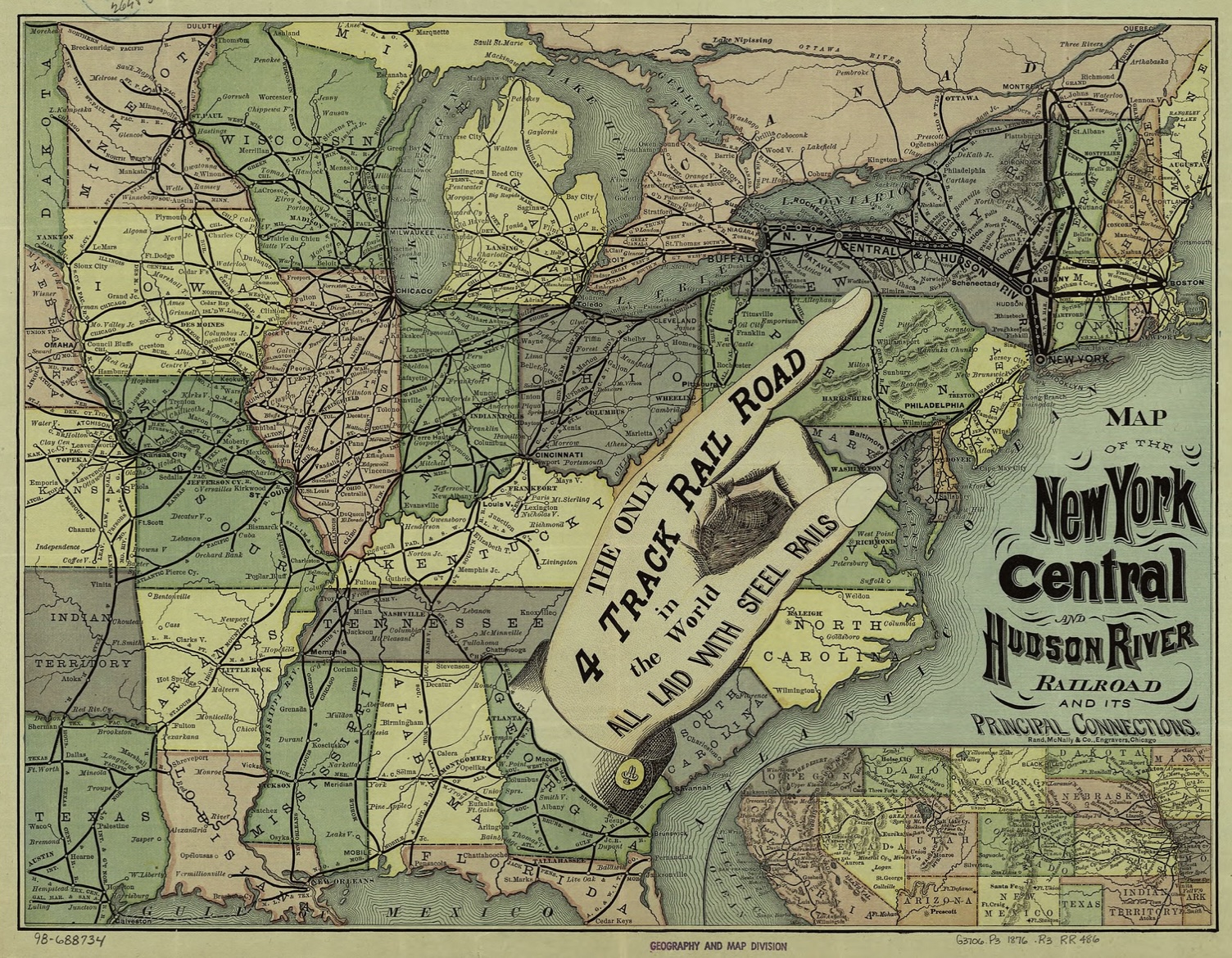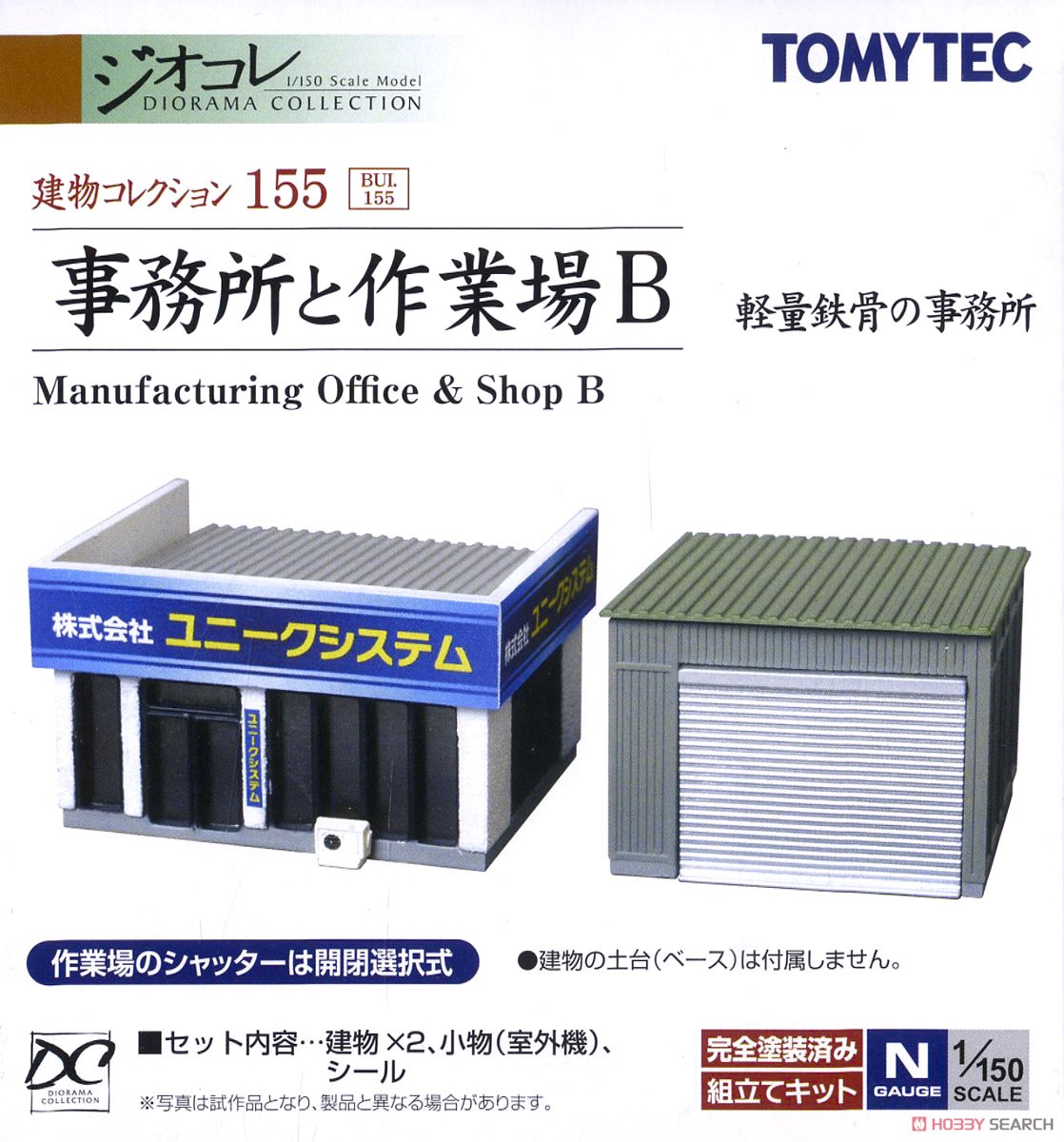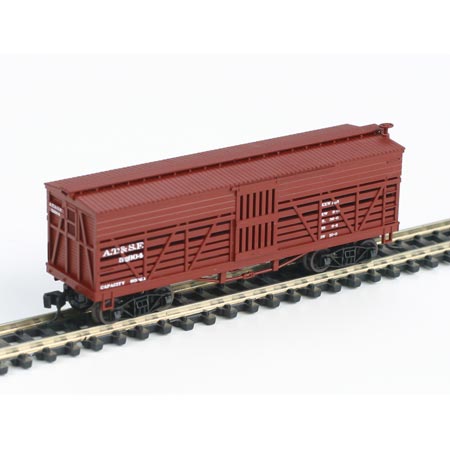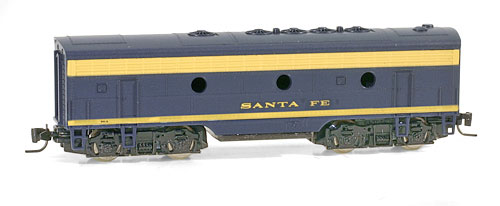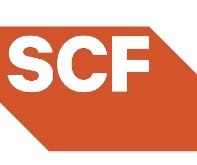Company History: In 1867, Cornelius Vanderbilt acquired control of the Albany to Buffalo-running NYC, with the help of maneuverings related to the Hudson River Bridge in Albany. On November 1, 1869, he merged the NYC with his Hudson River Railroad to form the New York Central and Hudson River Railroad. This extended the system south from Albany along the east bank of the Hudson River to New York City, with the leased Troy and Greenbush Railroad running from Albany north to Troy.
Vanderbilt's other lines were operated as part of the NYC; these included the New York and Harlem Railroad, Lake Shore and Michigan Southern Railway, Canada Southern Railway and Michigan Central Railroad.
The Spuyten Duyvil and Port Morris Railroad was chartered in 1869 and opened in 1871, providing a route on the north side of the Harlem River for trains along the Hudson River to head southeast to the New York and Harlem Railroad. Trains could head toward Grand Central Depot, built by NYC and opened in 1871, or to the freight facilities at Port Morris. From opening, it was leased by the NYC.
The Geneva and Lyons Railroad was organized in 1877 and opened in 1878, leased by the NYC from opening. This was a connection between Syracuse and Rochester, running from the main line at Lyons to the Auburn Road at Geneva. It was merged into the NYC in 1890.
In 1885, the New York, West Shore and Buffalo Railway, a competitor since 1883 with trackage along the west shore of the Hudson River and on to Buffalo closely paralleling the NYC, was taken over by the NYC as the West Shore Railroad and developed passenger, freight, and car float operations at Weehawken Terminal. The NYC assumed control of the Pittsburgh and Lake Erie and Boston and Albany Railroads in 1887 and 1900, respectively, with both roads remaining as independently-operating subsidiaries. William H. Newman, president of the New York Central lines, resigned in 1909. Newman had been president since 1901, when he replaced Samuel R. Callaway (who had replaced Depew as president in 1898).
In 1914, the operations of eleven subsidiaries were merged with the New York Central & Hudson River Railroad, re-forming the New York Central Railroad. From the beginning of the merger, the railroad was publicly referred to as the New York Central Lines. In the summer of 1935, the identification was changed to the New York Central System, that name being kept until the merger with the Pennsylvania Railroad in 1968..From Wikipedia
Vanderbilt's other lines were operated as part of the NYC; these included the New York and Harlem Railroad, Lake Shore and Michigan Southern Railway, Canada Southern Railway and Michigan Central Railroad.
The Spuyten Duyvil and Port Morris Railroad was chartered in 1869 and opened in 1871, providing a route on the north side of the Harlem River for trains along the Hudson River to head southeast to the New York and Harlem Railroad. Trains could head toward Grand Central Depot, built by NYC and opened in 1871, or to the freight facilities at Port Morris. From opening, it was leased by the NYC.
The Geneva and Lyons Railroad was organized in 1877 and opened in 1878, leased by the NYC from opening. This was a connection between Syracuse and Rochester, running from the main line at Lyons to the Auburn Road at Geneva. It was merged into the NYC in 1890.
In 1885, the New York, West Shore and Buffalo Railway, a competitor since 1883 with trackage along the west shore of the Hudson River and on to Buffalo closely paralleling the NYC, was taken over by the NYC as the West Shore Railroad and developed passenger, freight, and car float operations at Weehawken Terminal. The NYC assumed control of the Pittsburgh and Lake Erie and Boston and Albany Railroads in 1887 and 1900, respectively, with both roads remaining as independently-operating subsidiaries. William H. Newman, president of the New York Central lines, resigned in 1909. Newman had been president since 1901, when he replaced Samuel R. Callaway (who had replaced Depew as president in 1898).
In 1914, the operations of eleven subsidiaries were merged with the New York Central & Hudson River Railroad, re-forming the New York Central Railroad. From the beginning of the merger, the railroad was publicly referred to as the New York Central Lines. In the summer of 1935, the identification was changed to the New York Central System, that name being kept until the merger with the Pennsylvania Railroad in 1968..From Wikipedia
Successor/Parent History: The New York Central Railroad (reporting mark NYC), known simply as the New York Central in its publicity, was a railroad operating in the Northeastern United States. Headquartered in New York City, the railroad served most of the Northeast, including extensive trackage in the states of New York, Pennsylvania, Ohio, Michigan, Indiana, Illinois, and Massachusetts, plus additional trackage in the Canadian provinces of Ontario and Quebec.
The railroad primarily connected greater New York and Boston in the east with Chicago and St.Louis in the midwest along with the intermediate cities of Albany, Buffalo, Cleveland, Cincinnati, and Detroit. NYC's Grand Central Terminal in New York City is one of its best known extant landmarks.
1853 company formation: Albany industrialist and Mohawk Valley Railroad owner Erastus Corning managed to unite ten railroads together into one system, and on March 17, 1853 executives and stockholders of each company agreed to merge. The merger was approved by the state legislature on April 2, and by May 17, 1853 the New York Central Railroad was formed.
In 1867 Vanderbilt acquired control of the Albany to Buffalo running NYC. On November 1, 1869 he merged the NYC with his Hudson River Railroad into the New York Central and Hudson River Railroad. Vanderbilt's other lines were operated as part of the NYC.
In 1914, the operations of eleven subsidiaries were merged with the New York Central & Hudson River Railroad, re-forming the New York Central Railroad. From the beginning of the merge, the railroad was publicly referred to as the New York Central Lines. In the summer of 1935, the identification was changed to the New York Central System.
In 1968 the NYC merged with its former rival, the Pennsylvania Railroad, to form Penn Central (the New York, New Haven and Hartford Railroad joined in 1969). That company went bankrupt in 1970 and was taken over by the federal government and merged into Conrail in 1976. Conrail was broken up in 1998, and portions of its system was transferred to the newly formed New York Central Lines LLC, a subsidiary leased to and eventually absorbed by CSX and Norfolk Southern. Those companies' lines included the original New York Central main line, but outside that area it included lines that were never part of the New York Central system. CSX was able to take one of the most important main lines in the nation, which runs from New York City and Boston to Cleveland, Ohio, as part of the Water Level Route, while Norfolk Southern gained the Cleveland, Ohio to Chicago, Illinois portion of the line called the Chicago line.
At the end of 1925, the New York Central System operated 11,584 miles (18,643 km) of road and 26,395 miles (42,479 km) of track; at the end of 1967 the mileages were 9,696 miles (15,604 km) and 18,454 miles (29,699 km).
Read more on Wikipedia.
The railroad primarily connected greater New York and Boston in the east with Chicago and St.Louis in the midwest along with the intermediate cities of Albany, Buffalo, Cleveland, Cincinnati, and Detroit. NYC's Grand Central Terminal in New York City is one of its best known extant landmarks.
1853 company formation: Albany industrialist and Mohawk Valley Railroad owner Erastus Corning managed to unite ten railroads together into one system, and on March 17, 1853 executives and stockholders of each company agreed to merge. The merger was approved by the state legislature on April 2, and by May 17, 1853 the New York Central Railroad was formed.
In 1867 Vanderbilt acquired control of the Albany to Buffalo running NYC. On November 1, 1869 he merged the NYC with his Hudson River Railroad into the New York Central and Hudson River Railroad. Vanderbilt's other lines were operated as part of the NYC.
In 1914, the operations of eleven subsidiaries were merged with the New York Central & Hudson River Railroad, re-forming the New York Central Railroad. From the beginning of the merge, the railroad was publicly referred to as the New York Central Lines. In the summer of 1935, the identification was changed to the New York Central System.
In 1968 the NYC merged with its former rival, the Pennsylvania Railroad, to form Penn Central (the New York, New Haven and Hartford Railroad joined in 1969). That company went bankrupt in 1970 and was taken over by the federal government and merged into Conrail in 1976. Conrail was broken up in 1998, and portions of its system was transferred to the newly formed New York Central Lines LLC, a subsidiary leased to and eventually absorbed by CSX and Norfolk Southern. Those companies' lines included the original New York Central main line, but outside that area it included lines that were never part of the New York Central system. CSX was able to take one of the most important main lines in the nation, which runs from New York City and Boston to Cleveland, Ohio, as part of the Water Level Route, while Norfolk Southern gained the Cleveland, Ohio to Chicago, Illinois portion of the line called the Chicago line.
At the end of 1925, the New York Central System operated 11,584 miles (18,643 km) of road and 26,395 miles (42,479 km) of track; at the end of 1967 the mileages were 9,696 miles (15,604 km) and 18,454 miles (29,699 km).
Read more on Wikipedia.
Brief History: The U.S. is a country of 50 states covering a vast swath of North America, with Alaska in the northwest and Hawaii extending the nation’s presence into the Pacific Ocean. Major Atlantic Coast cities are New York, a global finance and culture center, and capital Washington, DC. Midwestern metropolis Chicago is known for influential architecture and on the west coast, Los Angeles' Hollywood is famed for filmmaking.
Item Links: We found: 2 different collections associated with New York Central & Hudson River - Railroad
- Collection N Scale Model Trains: 7 different items.
- Collection Z Scale Trains: 1 different items.
Item created by: CNW400 on 2022-02-25 13:53:24. Last edited by CNW400 on 2022-02-25 13:57:23
If you see errors or missing data in this entry, please feel free to log in and edit it. Anyone with a Gmail account can log in instantly.
If you see errors or missing data in this entry, please feel free to log in and edit it. Anyone with a Gmail account can log in instantly.


